At long last they’re all out, in stock and making every aspiring wildlife photographer on a budget scratch their head and wonder which one they should own? Of course I’m talking about the Tamron 150-600mm f/5-6.3 VC, the Sigma 150-600mm f/5-6.3 DG Contemporary and the Nikkor 200-500mm f/5.6E VR. These three budget super telephoto zoom lenses compete with each other directly at their price points, reach and heft; but the big question remains – how do they stack up optically? This was my quest when looking at the three lenses: I wanted to find out which of the three deserves the crown as the best budget-friendly super telephoto zoom. Let’s take a look at the lenses in more detail.
Two years ago, getting through the wildlife photography door required a five-figure cover charge. That all changed when Tamron introduced their 150-600mm f/5-6.3 zoom for the ridiculously low price. 600mm at a thousand bucks? It had to suck. But it didn’t. While not as razor sharp as the Nikon or Canon 500/600mm primes, it was still a lot sharper than anyone imagined such an affordable lens could be. And at just over a grand it let a lot more people experience the joys of wildlife photography. Tami became my go to lens when I would scout a new wildlife location – I could move fast covering more ground and if something amazing presented itself, say a bobcat peeking through the woods, I had a capable lens to capture the moment.
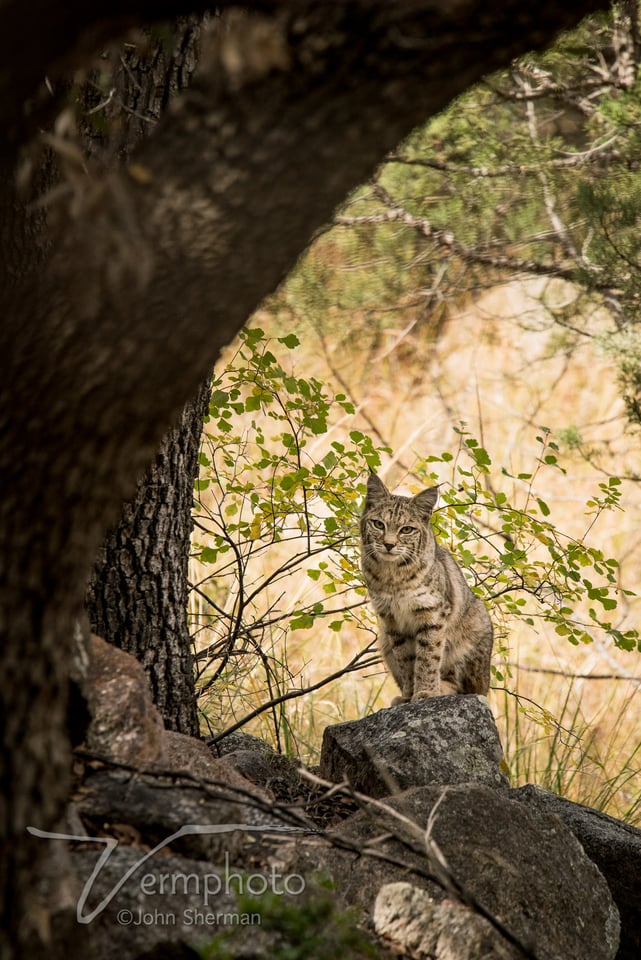
Now Tami, as I affectionately call her, has company – both Sigma and Nikon have produced competitors in the budget super tele zoom market. Sigma introduced not one, but two 150-600mm zooms. One, their budget Contemporary model is $1089, the other is the Sport model at twice the price and a lot more weight. It’s the former we’ll be comparing today – let’s call her Sigi. Not to be outdone, Nikon answered the challenge and has recently released the Nikkor 200-500mm f/5.6 ($1399). Canon so far hasn’t answered the bell – the closest they come is their 100-400mm zoom, which is over 2K and really doesn’t have the reach to join the Tamron/Sigma/Nikon super tele zoom group we’re comparing. Note that both Tamron and Sigma versions are available in both Nikon and Canon mounts. The Nikkor, AKA Niki, is Nikon mount only.
Table of Contents
1) General Considerations
When you start getting out into the 500-600mm range you’re shooting at 10-12x magnification – more than a standard 8x pair of binoculars. There aren’t many photo subjects other than wildlife that require such reach. Perhaps a few sports where you can’t get close to the participants – like motorsports – or taking photos of the moon. If you’re not shooting small, shy critters, then you probably can get by with a lighter, more compact zoom like a 70-300mm or an 80-400mm/100-400mm. 400mm is generally long enough for larger wildlife like deer, elephants, lions and the like.

Most zoom owners shoot mostly at the far or near end of the lenses zoom range and less frequently at the intermediate focal lengths. With these supertelephoto zooms, users will most likely be spending a lot of time at the far (500/600mm) end. I’ve been shooting the Tamron 150-600mm for over a year now and when I check my usage stats 63% of my shots were at 600mm and 5% at 150mm, leaving a third of the shots at the intermediate focal lengths. Why lug such a big, cumbersome lens about if you don’t need 500-600 millimeters of reach? For birds you can use all the reach you can get.

NIKON D810 + Tamron 150-600mm f/5-6.3 @ 600mm, ISO 640, 1/500, f/8.0
As these lenses will likely be used more at the far than medium or near end, performance at the far end will be more important for most folks.
In general, most wildlife shots feature the animal somewhere around the center of the frame, not in the corners. Hence for wildlife I would tend to favor a lens with superior sharpness in the center of the frame over one with less sharpness in the center but better corner-to-corner sharpness.

On the flip side, when shooting landscapes, corner-to-corner sharpness is more important.

Sharpness is not the paramount consideration when it comes to wildlife lens performance. Did I just say that on Photography Life? Let me state this another way. I could give a s#!+ about how sharp all the shots are that I miss. Paramount in wildlife photography is the ability to capture the moment. You usually don’t get a second chance when an animal does something unique.

Therefore attributes like autofocus speed and accuracy, focus-tracking ability, effective image stabilization, convenient zooming and the like become just as important as sharpness. Heck, even the ease of removing the lens cap with the lens hood on could be the difference between getting the shot or cursing yourself (Tamron wins the lens cap challenge, with Nikon second and Sigma a distant third). These attributes are hard to quantify, but I’ll try my best to give every lens a good workout and find out which one performs best in the field.
2) Fixed Versus Variable Aperture
Sigi and Tami both have a variable maximum aperture while Niki has a fixed maximum aperture. Historically, fixed aperture zooms have been faster, sharper and more expensive than variable aperture lenses. But that pretty much applies to the f/2.8 zooms. Those were made for the professional market and built to higher standards than the slower variable zooms of yesteryear. At a fixed f/5.6 the Nikon 200-500 is not a fast lens and only 1/3 stop faster than Sigi and Tami at maximum zoom. Is there an advantage to a fixed aperture? Very little it turns out. The two cases are: 1) when shooting manual wide open, setting your exposure, then zooming and forgetting to reset your exposure; and 2) when zooming wide open when shooting video. In case one this is pretty inconsequential given how much exposure latitude modern sensors give us. In case 2, DSLR videos are usually shot at 1/50 sec, hence it would have to be real low light to shoot wide open even at base ISO. Add to that that zooming is out of fashion these days (get a boom dude) and any advantage of fixed over variable won’t come into play for 98% of consumers. With Sigi and Tami, once you stop down to f/6.3 (only 1/3 stop slower than f/5.6) the lenses will stay at the same aperture when zooming. If shooting video with the aperture wide open then you can’t zoom without altering your exposure (because you’ll probably be at 1/50 sec you’ll only be able to shoot wide open in very low light or with a neutral density filter attached [95mm ND filters start around $300]).
So there’s little advantage to a fixed aperture in this case and Sigi and Tami are faster at their wide ends than Niki. Bottom line – I wouldn’t worry at all about one being fixed and the other two not.
3) Why Not Primes?
If most of one’s time will be spent shooting at the long end of these zooms, why not just buy a prime lens? After-all, it should be much easier to design a fixed focal length lens than a zoom as less is being asked of it. The reason is because the latest Nikon and Canon 600mm primes cost over ten grand. For that price, why not just buy a pet tiger and shoot the kitty with your iPhone?
The reason those big primes cost so much is because at f/4 they are fast. Faster lenses let in more light, improving AF performance and allowing one to work in dimmer conditions – conditions under which many animals are most active. The faster the lens is (given the same focal length) the bigger diameter the elements need to be to let in that much light. Bigger elements are more expensive to make than smaller ones, so much so that these monster primes end up with equally monstrous price tags. If your goal is to shoot quetzals in the rainforest, start saving up now. But if you’re shooting in brighter conditions (say on safari), you should be able to get by with f/5.6. Bear in mind too that as sensor technology continues to improve, cameras are getting better and better at shooting in low light. To me, the biggest advantage of the f/4 lenses over the f/5.6-f/6.3 lenses is in AF-performance. Camera AF modules simply work better when they get more light. When you get to 500/600mm, your depth of field wide open is wafer thin, so if you want to get both eyes of your subject in focus, but the subject isn’t perfectly aligned to your camera, then you’ll be stopping down to f/8 or so anyway. f/4 might give a bit nicer out of focus background, but the difference between that and f/5.6 isn’t really much.
All of this makes me wish Nikon and Canon or other manufacturers would produce 600mm f/5.6 primes that would be far less expensive than the f/4 primes, and a whole lot lighter too. But let’s stop daydreaming and look at the affordable lenses available now. We’ll break this down into the various significant attributes and compare each lens against the others in terms of sharpness, AF and manual focus performance and tracking, image stabilization, build quality, and general handling.
4) Sharpness
Testing telephotos for sharpness in the field can be frustrating. Due to atmospheric disturbances results can’t be as controlled as in a laboratory. Nevertheless, I doubt anyone buying any of these lenses is doing so to shoot lens charts indoors. If you look at the examples in this review, all of these lenses produce nice results. If you’re looking for the ultimate in sharpness, corner to corner and near to far, forget any of these lenses and fork out five figures for a pro prime. But if you’re looking for versatility and good, but not ultimate, sharpness, then all three of these lenses are good for different reasons. All three were sharper when stopped down into the f/8 – f/11 range. They all showed signs of diffraction at f/16 (not so much I wouldn’t shoot them at f/16 – I could sharpen in post and get good results) and at f/22 were getting pretty soft.
4.1) Nikon
Niki is razor sharp at 500 mm and near minimum focusing distance. Just look at the hairs in front of this condor’s eye (Condor in release pen awaiting results of lead poisoning test).
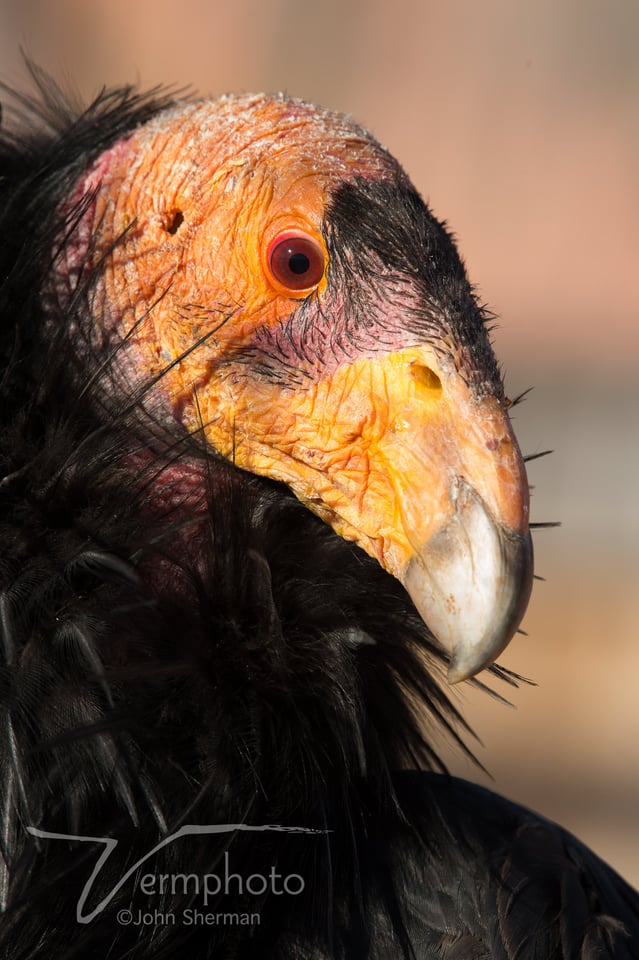
And at 1:1:

This is darn close to what a prime would deliver and Niki focuses down to 7.2 feet, compared to the Nikkor 500mm f/4E which only focuses down to 11.9 feet.

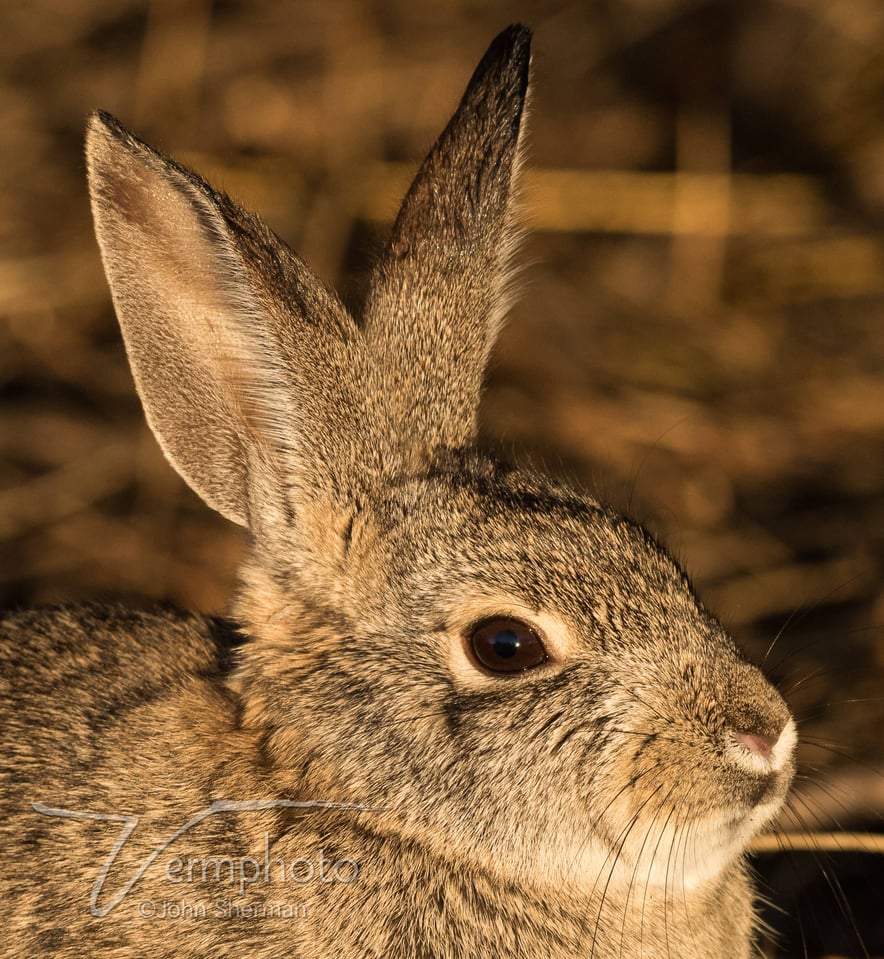
NIKON D810 + Nikkor 200-500mm f/5.6 @ 500mm, ISO 500, 1/500, f/7.1

NIKON D4S + Nikkor 200-500mm f/5.6 @ 500mm, ISO 1600, 1/800, f/8.0
Close up corner-to-corner sharpness is good:

This was from a multi-focal length series shot ~10 feet from the subject. Corner to corner sharpness was acceptable at all focal lengths when focused this close.
At infinity, it’s another story altogether with Niki showing noticeable softness, especially in the corners at all focal lengths but more so at longer focal lengths.

This is at 500mm and check out the corner softness:

Zoomed back to 290 things get better – the softening in the corners isn’t bad and could be improved successfully with some spot sharpening in post.
More field testing showed that the corner sharpness starts falling off noticeably from about 60 feet from the subject to infinity. Tami and Sigi both beat Niki at long distances with Tami the best at infinity and Sigi better at 60 feet.

That’s Tami at 500mm

And the 1:1 corner crop. Some softness but much better than Niki (die hard pixel peepers looking closely at the full Tami version will see softness on the right side from decentering)
Confusing matters more with Niki at distance is that on occasion I did get good results like this.

This is at about 100 yards and looks good corner to corner. I tried over and over to get repeatable results one way or the other with Niki at distance but never got consistent results. I would usually write this off to user error but I when I tried Tami and Sigi on the same scenes with the same settings I got much more consistent results. Bottom line is as much as I want Niki to be a great overall lens, I don’t trust her for corner-to-corner sharp results at long distances, especially from 400-500mm. When shooting at long distances I had better luck stopping Niki down to f/11 or more such as in the below shot at f/20.

(For the record my Tami/Sigi/Niki side-by-side tests were done on tripod both with image stabilization on and off, focused at 100% in live view, exposure delay mode on and electronic front shutter activated. I would take multiple shots at each focal length setting, take the best result and compare it against the other lenses. Lesser results would be chalked up to user error.)
If you’re shooting smaller wildlife and cropping anyway or shooting a crop-sensor body then Niki is a good choice sharpnesswise because you’re cropping away the corners.
4.2) Sigma
When it comes to sharpness, Sigi had good center sharpness from near to far and through the range of focal lengths. Corners are noticeably soft in long distance shots at all focal lengths.


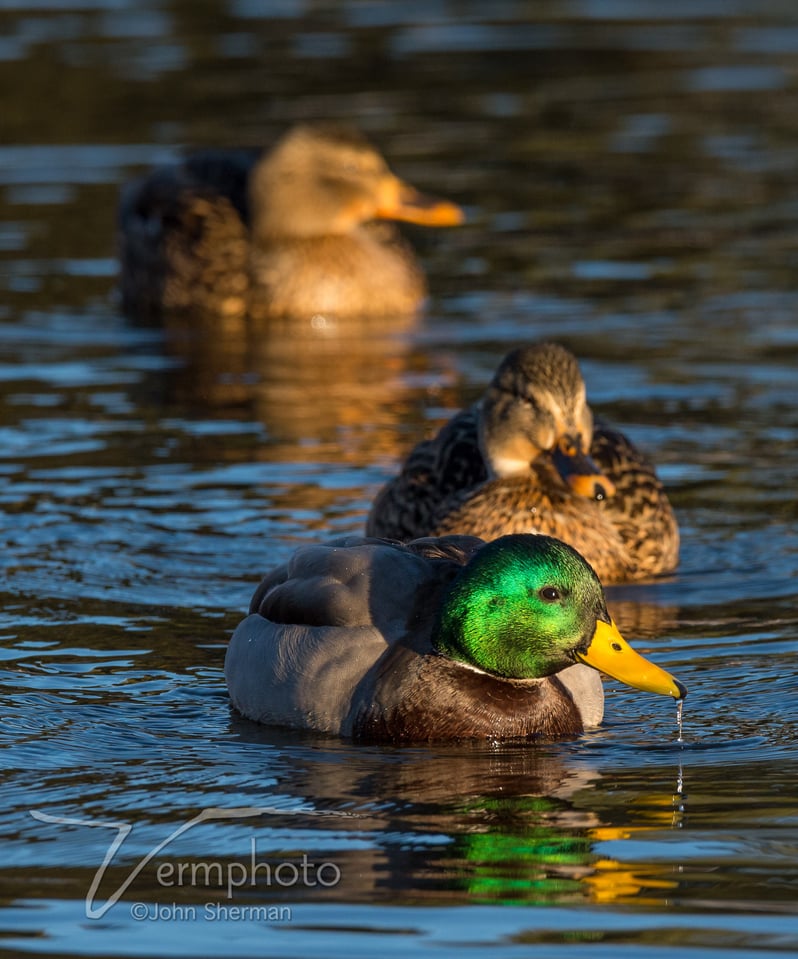
Center sharpness is good – noticeably better stopped down to f/8 at 300mm and up.
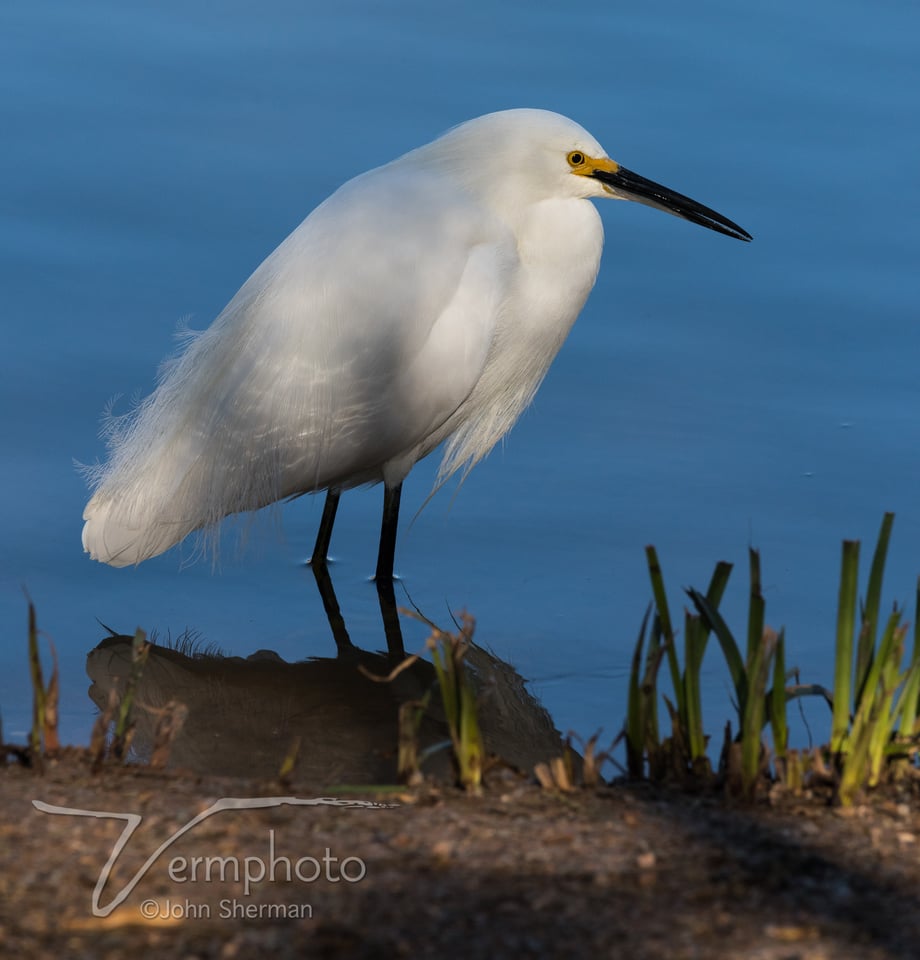
Corner sharpness is hurting at long distance and f/8 in this study of the Organ Mountains in New Mexico.


Center looks good.

Corners are yecchhh.
Like Niki, corner to corner looks better at shorter focal lengths, especially when stopped down, but even the four shot pano of clouds over the Organs earlier shows softness in the corners.
Nasim’s Imatest results suggest that Tami is better at the long end and Sigi better at the wide end, but I couldn’t discern this difference in the field other than Tami having better corner sharpness – center sharpness seemed equal. I got nice detailed results with Sigi at 600mm.
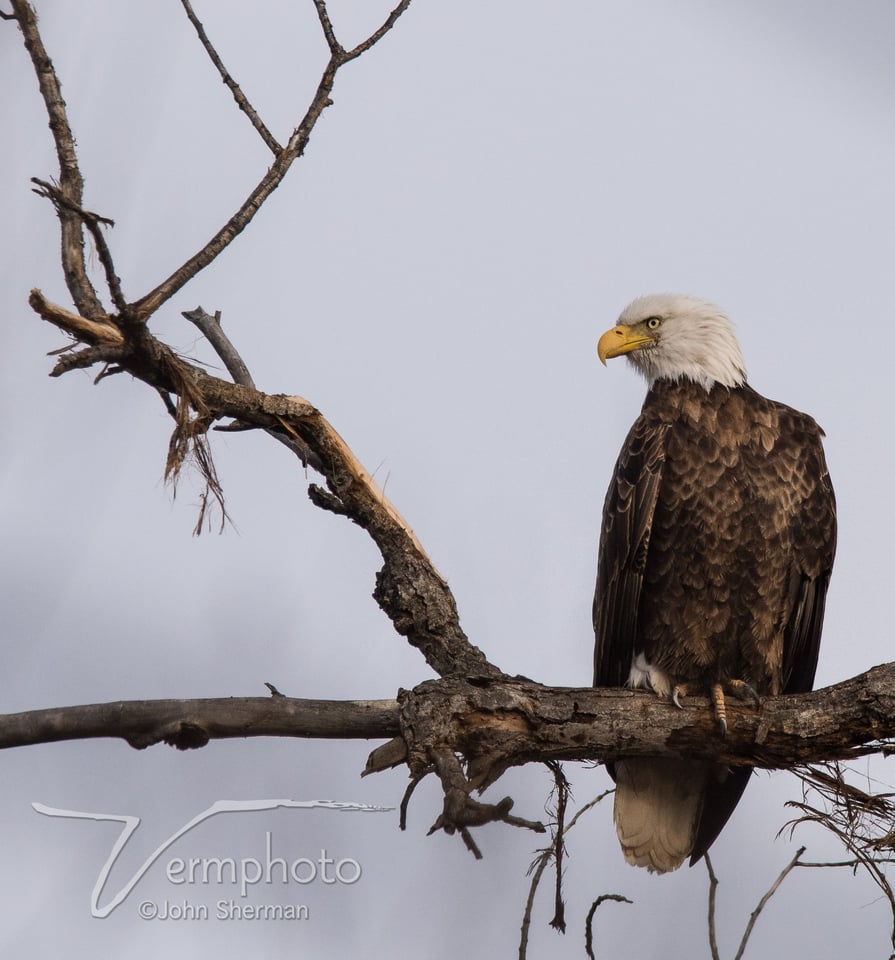
NIKON D810 + Sigma 150-600mm f/5-6.3 DG @ 600mm, ISO 500, 1/1250, f/8.0
For subjects not requiring good corner sharpness, e.g. wildlife portraits, Sigi does fine. For long distance landscapes Sigi doesn’t do well. As with Niki, if this lens is mated to a crop sensor body, then much of the corner softness woes will go away.
4.3) Tamron
Of the three lenses I feel Tami has the best balance of near to far and corner-to-corner sharpness at all focal lengths. Here’s a rock squirrel at 600mm shot with Tami:


NIKON D4S + Tamron 150-600mm f/5-6.3 @ 200mm, ISO 500, 1/640, f/8.0
At infinity Tami was tops of the three.

And at 250mm Tami giving more fine landscapes.
For long distance landscapes this would be the choice of the three, but what about wildlife? While not as sharp as my long primes, the results are still good enough for my editors who can be pretty picky about such stuff. I can’t gripe about a lens that has paid back for itself.

Here’s a Flicker at 600mm and nearly 1:1. Tami gets razzed for being soft wide open at 600mm but with some minor sharpening in post this looks pretty good. Stop down to f/8 and results improve as with this raven below.

At 60 feet and closer I don’t feel the current copy I’m shooting is as sharp as Niki or Sigi. However this is the second copy I’ve owned (more about this later) and my second copy currently has a decentered element (going to the doc for this soon). Sample variation is always a concern on less expensive lenses.
Because Tami displays field curvature it can cause focusing issues at wide apertures. For instance, if you focus using the center point, then recompose to move your subject near the edge of the frame, at that point the subject is slightly out of focus, requiring either refocusing using an outer AF point, manually tweaking the focus or stopping down to increase depth of field. I didn’t notice this as much with Niki or Sigi, but I didn’t have near as much time shooting them as I’ve had with Tami.
Note: Looks like Nasim’s 200-500mm lens sample showed superior corner performance at 500mm than mine, which shows that such lenses are always prone to pretty large sample to sample variation. Nasim will be publishing the results of his research in his upcoming Nikon 200-500mm VR review, where he will compare sharpness of all three lenses using Imatest.
5) Wide open shootout
Here’s the same goose shot wide open at the far end of each lens and cropped to 1:1:



Niki first place, Tami second, Sigi third.
For kicks, let’s crop the 500mm Niki shot to match the 600mm image size – this will require some upsampling on export.

Niki at 500 mm and cropped to 600mm image size looks sharper than Tami. Mind you this is for a subject ~20 feet away, right in Niki’s sweet zone. Go to long distance (100 feet plus) and Tami wins this challenge.
6) Autofocus Performance
When it comes to AF speed, Tami and Sigi are both quick and in the field I can’t distinguish a difference when they are focusing on a static subject. Racking focus from 10 feet to infinity takes the same amount of time. Niki is noticeably slower than both Tami and Sigi.
When it comes to accuracy, Niki and Tami are both accurate, while Sigi has trouble nailing focus on moving subjects or ones in poor light. Sigi hunted much more than either Tami or Niki. While Niki snapped into focus on a flock of crows on a frozen lake (plenty of contrast there to help the 21-pt grid) Sigi kept hunting and hunting and never could focus.

This also happened at times with low-contrast subjects.

I give Tami the slight edge over Niki in AF performance on static subjects just because Tami is a bit faster. Sigi comes in third due to her hunting issues.
What about focus on moving subjects and focus tracking? For this I did bird in flight tests. Sigi did poorly in the osprey test – if any bird in flight should be easy to nail focus on it would be an osprey slowly circling above a pond and occasionally hovering in place.

Ouch – dead center and cropped less than 50% – how could you miss this shot? Sigi was only sharp on about 50% of my osprey test shots.
Niki and Tami both did quite well on finding and holding focus on birds in flight.
Tami nails this Crested Caracara shot:

And Niki has no trouble with this egret:

I would give the BIF advantage to Niki for tracking better in low light. I even had good luck on post-sunset shots of ducks (quite fast flyers) with Niki.

Tami comes in second for tracking birds-in-flight and Sigi comes in last.
7) Manual Focus
I love shooting wildlife through foliage to give a sense of the individual in its environment – say a heron hiding behind the reeds in the mist.

This is a situation that will drive AF systems nuts. Another frustration-prone scenario is focusing on birds on rippled water – the contrast of the ripples grabs the AF’s attention often causing back or front focused results.

In such situations I manually focus.
The Sigma and Tamron focus collars turn in the reverse direction from Nikon. I don’t find this as big a deal as reverse zoom. If I’m manually focusing I probably have a bit of time and the opposite direction won’t cause me to miss the shot. What is a big deal is how small and ill-placed the Sigma focus ring is. It’s very thin, has minimal knurling, a stiff and sticky action, and is too close to body for balance. It’s as if manual focusing was an afterthought for Sigma. In contrast the focus ring on Tami is much larger and smoother allowing for easy manual focus adjustments. Ditto with Niki’s focus collar, which is big and smooth and turns the familiar direction for us Nikon owners. It’s also a bit further from the body for better balance. Advantage Niki when it comes to manual focus. Tami second. Sigi a distant third. (If you’re shooting Canon then Tami would win the manual focus challenge.)
All three lenses exhibit an equivalent amount of focus breathing, meaning when focused at nearby images, the image magnification decreases from what it theoretically should be at a given setting. Here’s a screen shot comparing the field of view of my Nikkor 500mm prime to one of the supertelezooms.
You can see the prime has greater magnification at 500mm up close. This amount of focus breathing is not worth worrying about.
8) Image Stabilization
With image stabilization off, all three lenses handheld to 1/focal length then deteriorated quickly below that. Nikon has two stabilization modes labeled Normal and Sport. Normal is designed for stationary subjects. Sport is designed for subjects in motion. Sigi has two stabilization modes labeled OS1 and OS2. OS1 is for stationary subjects. OS2 is designed for subjects moving horizontally to the camera. In addition Sigi can plugged to a docking station to program two custom modes – this can be used to customize the image stabilization, focus speed and focus limiter ranges. I didn’t have a docking station to test this. Tami has just one stabilization mode they label VC.
Shooting stationary subjects handheld at 500mm yielded the following results: Nikon Sport mode gave good results to 1/125 sec (2 stops), Nikon Normal mode was good to 1/30 sec (4 stops). Sigma OS1 mode was good to 1/60 sec (3 stops). Sigma OS2 was good to 1/250 sec (1 stop). Tamron VC on was good to 1/125 (2 stops). Niki first, Sigi second, Tami third.
The above results are what you see in the final image, but what about what you see in the viewfinder?
Niki gives the steadiest view in the viewfinder, making it easy to locate, focus on and frame a subject in both Normal and Sport modes. However, Niki suffers from a large amount of “VR shift” meaning once you get the subject framed in the viewfinder and click the shutter, the mirror goes up and when it comes back down an instant later you see the subject framed off to one side or the other. The after-image you see in the viewfinder is what was captured in your image file, not your carefully composed before image. To combat this you need to frame more loosely by 10-15%. A 24 MP sensor will then end up with only 21-22 MP worth of useful coverage. If you’ll end up cropping a bunch for added reach this won’t be a big deal, but for tightly composed shots, say landscape studies, beware. This large VR shift is also noticeable in Nikon’s super-telephoto primes.
Tami’s image stabilization gives the next best viewfinder view, but with minimal VR shift.
When viewing through the viewfinder with Sigi, it’s a much shakier view than Tami or Niki. In fact, when I first tried the lens I wondered if the image stabilization was switched on. It takes a one second lag to get started, but even then seems to make little difference. The OS1 mode slows things down but still has a pretty high amplitude movement. The OS2 mode has a lower-amplitude shake, but it is quicker and jerky-looking. I found the OS2 mode more disconcerting. Either setting makes it hard to frame with confidence when handholding. If and when you do get framed though, there is minimal VR shift when shooting.
How to rank the viewfinder view? This is a tough one and depends on your priorities. Nikon seems to favor a rock solid view through the viewfinder to better allow for accurate focus point placement at the cost of sloppy framing due to VR shift. Tami treads the middle ground – minimal VR shift and relatively stable viewfinder view. Sigma seems to have tossed viewfinder view out the window in favor of final image results. If you are going to handhold landscapes or other tightly composed shots then Tami wins. If you’ll be cropping after the fact I would favor Niki.
All this raises the question of how important is image stabilization performance to you? It depends on your subjects (and how shaky your hands are). If you handhold shoot ungulates, sloths, tortoises and other subjects that won’t budge in 1/60 second, then image stabilization is a big deal.

These reeds aren’t moving so I’m happy to shoot under 1/focal length.
However if you are shooting subjects like birds, which twitch a lot causing blurring even at 1/500th, then image stabilization performance will be less of a priority.

I could turn image stabilization off and still get this shot.
9) Flare
In strong backlight all three lenses performed the same in regards to flare. These lenses don’t have the expensive coatings of the megabuck primes which will handily outperform them in such situations.
Here’s three unprocessed shots (except 1:1 cropping) of an eagle in a very hot backlit situation from long distance on a DX body – don’t expect much in terms of sharpness – these are just here to judge overall flare.



And one of them tweaked with added contrast in post.

10) Bokeh, Bokeh, Bokeh
Bokeh is such a subjective quality I’ll leave it up to the readers to check all the images in this post and make their own opinions. Here’s one example with some out of focus highlights to help you get started. These were all shot at 500mm then cropped about 50%. First shot at f/6.3, second at f/9.


Those are the shots from niki. If you believe good bokeh should be a smooth round evenly lit disk then you’re probably not too happy here. Pretty crunchy by those standards.
Now Tami.


Not as crunchy as Niki, but the rim is brighter than the center.


With Sigi it looks similar to Tami but a lighter rim and a bit evener inside. By the evenly lit circle test, Sigi wins, Tami second, Niki a distant third. But as stated above, bokeh is subjective and more than just out of focus pinpoint highlights. With broader out of focus features (no pinpoint highlights) Niki produced this.

11) Build Quality and Handling
Upon unpacking, all three lenses appear to have similar build quality as far as materials and general appearance go. Tami and Sigi feel nearly identical as far as weight and girth. There’s more of Niki to love, as she is noticeably fatter and heavier. On the stat sheets 9 – 10 ounces more doesn’t seem like much, but just carry it around your neck for an afternoon or try to handhold pointing up at an eagle for an extended period and you’ll definitely notice the weight disadvantage.
Niki has the smoothest zoom action, though due to her larger barrel diameter, it can require regripping the zoom collar to get from 200mm all the way to 500mm. I can zoom both Tami and Sigi from 200-500 without regripping, but to go all the way from 150-600 requires me to regrip. Tami zooms in the same direction as Nikon zooms, while Sigi zooms in the wrong, er, I mean Canon, direction. This drove me nuts. It might be something I could get used to over time, but in the month of testing I found myself consistently zooming the opposite direction I was used to and missing shots because of it. If you shoot Canon however, this zoom direction might be what tips the scales in favor of Sigi for you.
All three lenses can be operated as push pulls – grabbing the front end of the lens barrel or the hood and pushing out to zoom to greater magnification. The wide barrel of the Nikon made this awkward for me. Tami works well this way because it needs less force to zoom it out. Sigi has the stiffest zoom action of the three and doesn’t do well as a push-pull though such stiffness might loosen a bit with use. Personally I don’t recommend push-pulI zooming because I feel quickly extending a lens barrel could exacerbate dust pump issues (though I have no empirical evidence of this).
Which leads us to weather sealing. All three of these lenses expand and contract the barrel a lot when zoomed and though they all have a rubber gasket at the lens mount, none of them are fully weather-sealed (however the Sigma Sport in the next price range up is).
The combination of long barrel expansion/contraction and lack of full sealing causes the lens to suck dust into its interior. You end up with this.
This is what it looks like inside Tami after half a year of heavy shooting – this isn’t the front of the lens, but the surface of the element behind the front element. She’s a nasty dust pump. The bulk of my shooting is in Arizona – a dusty state at best. I’ve shot a lot of lenses in my career, but never seen one pump in so much dust. If all that junk was on one of your filters you’d clean it off. But to clean out the inside of your lens, you pretty much want to send it to the service center. That dust has the potential to lessen the contrast of your images and make them look flat. In practice this would only be noticeable when shooting into the sun, prompting you to boost the contrast back up in post. See the backlit shots of the eagle and dusty old Tami looks no worse than the new copies of Niki or Sigi. Interior dust is not a deal breaker, it just looks nasty.
Note that though I have evidence of this issue in Tami, all three of these lenses could end up have the same dust pump issue. My gut feeling is that perhaps the issue might be worse with Tami because she zooms faster and with less resistance. Unless you consistently shoot in dusty conditions I wouldn’t choose one over the other based on this.
One thing that has cost me shots with Tami is AF freeze-ups This seems to happen once, sometimes twice, every time we go out and shoot more than 400 frames without a lens switch. It’s easy to fix, just re-rack the lens in the mount; but this takes precious seconds to do this and eventually ended up costing me some shots. Still, the number of shots Tami got for me, due to her convenience and performance, made up for her occasional freeze-ups. I sent her to the doc three times for this issue, but every time Tamron service sent her back she’d freeze up again the very next shoot. Eventually Tamron sent me a new copy which hasn’t frozen up as much, but has a few times. Given that two additional copies I’ve shot have also frozen up on me, I have to think this isn’t just a case of a bad copy, but rather some more inherent issue. Of the four copies I’ve shot, every one has frozen up at some point. Bear in mind that these freeze-ups only seem to occur after I’ve already shot a bunch of frames. I’m a heavier shooter than most (hey leave my beer gut out of this) so if you don’t blaze away lots of long burst sequences you may never get one of these freeze-ups. Another note on the freeze-ups is that they seemed to increase in frequency as my original copy got older. None the first week, then maybe once a week, then eventually nearly every session after I’d been shooting it for several months. I didn’t experience any such freeze-ups with Sigi or Niki.
12) Other Features
12.1) Zoom lock
Zoom locks prevent the barrel from extending when you’re walking about. All three of these lenses will extend to full length in short order while walking if you don’t use the lock. I rarely use zoom locks as I mostly shoot these lenses at maximum focal length, therefore having the barrel fully extended saves me precious seconds.
Niki has a hard zoom lock (must flip switch to unlock) at 200 mm.
Tami has hard zoom locks at 150mm and 400mm.
Sigi has a hard lock at 150mm. It also has soft locks at 180, 200, 250, 300, 400, 500, and 600 millimeters. To disengage the soft lock takes a twist of the zoom ring – quicker than flipping a lock switch. If I utilized zoom locks regularly I think this would be a good feature.
Sigi wins zooms locks, Tami and Niki tie for second
12.2) Focus Limiter Switch
Sigi has three modes instead of two like Nikon and Tamron. All three lenses have a long distance setting for what I would consider default wildlife mode. For Tami this is 15m to infinity, for Sigi 10m to infinity and for Niki 6m to infinity. All three have a “full” setting for when you get closer to your subject. Sigi adds a ”close only” setting (2.8m to 10m) – I could see this as being useful to expedite AF at close distances, however I found it is easy to bump this switch to “close only” mode and then think the AF has frozen. This cost me shots the first day but later I got accustomed to not bumping the switch. Toss up between the three.
12.3) Tripod Foot/Collar
All three lenses have a rotating removable tripod foot/collar. With Sigi the short tripod foot makes this a bit scary to carry by the foot – there’s not much to grip – my paws can only get two fingers on it. Hence why the lens comes with a strap that mounts to the foot. Furthering Sigi’s tripod foot woes is how the tightening knob jabs into your thumb if you hand-support the lens by the foot as I like to.
Niki’s tripod foot is nice and long giving plenty of room to grip it – 3.5 of my finger’s worth. Sadly it has no lip on the end or finger knurls like the Sigma or Tamron, therefore it doesn’t feel all that secure carrying the camera/lens by the foot. Nikon, please get a clue and add a lip or better yet a lip plus the grippy rubber found on your supertele primes. While you’re at it, how about casting in some Arca-Swiss grooves.
Tami’s foot gives me a three-finger grip with a slight lip on the end – the most secure of the three to carry by the foot. All of the collars rotate with the same amount of ease. None have Arca-Swiss grooves so you might find yourself adding a plate. Tami first, Niki second, Sigi third.
12.4) Lens Hood
Sigi’s knurling on her lens hood makes it easy to quickly reverse it from stowed mode to shooting mode. Tami and Niki’s hoods are both a pain to untwist from stowed mode. Sigi’s hood is short compared to Nikon and Tamron which could result in more flare in backlit situations. Sigi comes in last – tied with Niki and Tami – they all need reengineering.
12.5) Case
Sigi comes with a nice padded nylon carrying case – probably why it costs 20 bucks more than Tami with comes with just a plastic bag. Niki comes with the standard Nikon black sock. Sigi wins big time in the case department, Niki second, Tami a distant third.
13) Teleconverters?
My Nikon teleconverters are not compatible with Tami or Sigi. Sigma and Tamron make teleconverters compatible with their lenses but I didn’t have those to test. Because Tami and Sigi have more reach to start with, 600mm versus 500mm, then it’s natural to wonder if Niki, plus a 1.4x teleconverter would deliver results to rival Tami and Sigi at 600mm. Mind you, the Nikon teleconverters cost about 500 dollars, so by the time you add one to the 200-500mm you’re looking at 1900 bucks worth of glass – way beyond the price tag of either Tami or Sigi and closer to that of the Sigma 150-600mm Sport edition.
I shot Niki with the Nikon TC14III 1.4x teleconverter on a D810. The results were nowhere near as good as the Nikkor 500mm E plus TC14III, but if I work the better files in post and add sharpening I can get results I’d consider good for web use, but not acceptable for demanding print or publication uses.
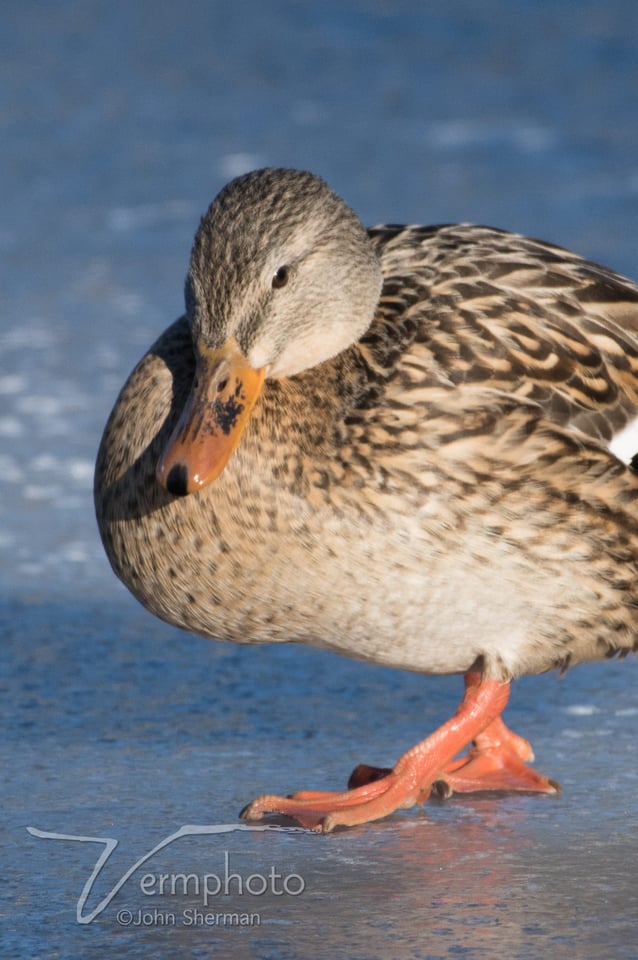
Niki with TC14III (700mm) and no processing.

With post-processing it still looks mediocre, but pretty typical of the results I got with this combo. At best I got results like this:
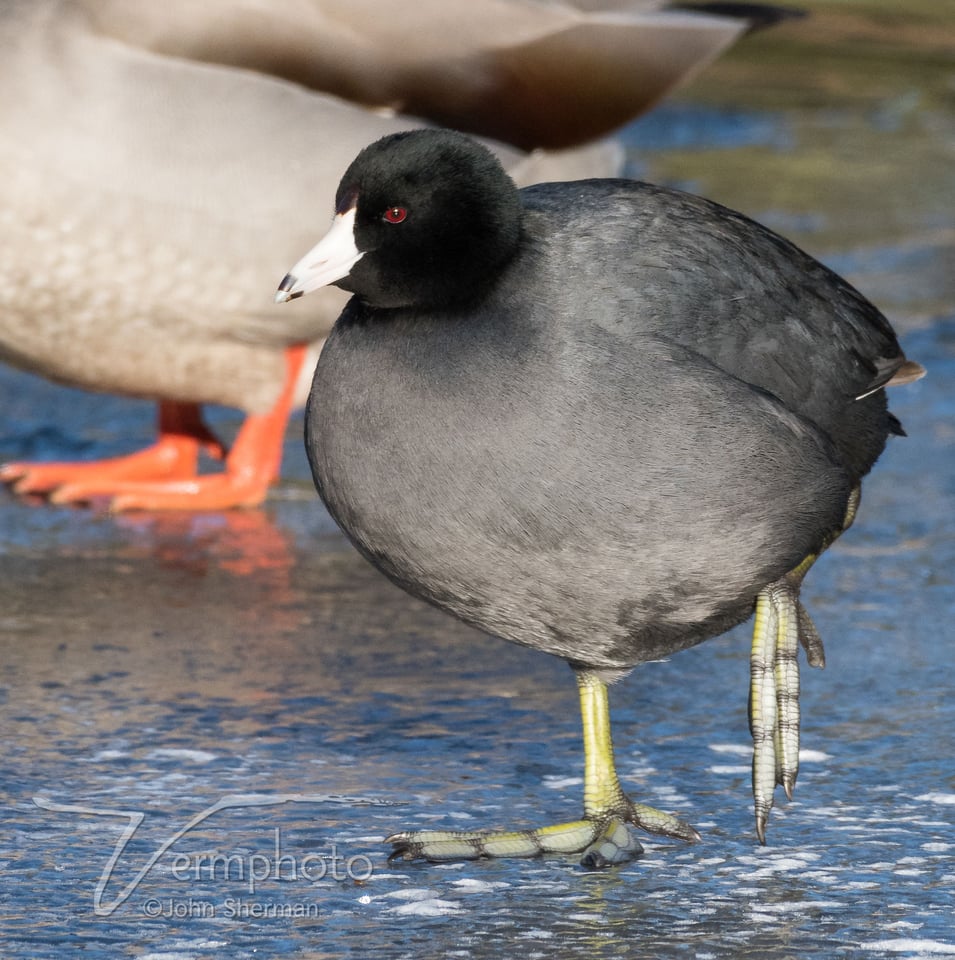
This had +77 sharpening applied in Lightroom and other tweaks.
The results are better than the 80-400mm plus TC14II, but that combo in my opinion is simply abysmal.
The better alternative for getting more reach from the 200-500mm (or either 150-600mm) is to mount them on a DX body like the D7200 or D500. This would give extra reach and trim away the soft edges.
On a lark I mounted the Nikon TC17II on the 200-500mm and got some surprisingly good results. By surprising I mean reasonably close to what I would get with my 500mm prime and the 1.7x (a combination that’s not nearly as sharp as the 1.4x plus 500mm prime).

Wow, that’s 850mm worth of dove at 1 to 1. I wouldn’t get too excited by this right now though, as adding the 1.7x narrows the widest aperture to f/9.5 – too slow to autofocus in anything but the brightest daylight. This might change though with the new more sensitive AF systems being introduced in the D5 and D500 that purportedly will focus at -4 EV.
14) Conclusion
If you handed me any of these lenses two years ago and told me they cost less than two grand I would be delighted by the results. They aren’t a challenge to Nikon and Canon’s supertelephoto primes, but for the price these give great value. Now that there are three to pick from, the obvious question is which one to choose. I’ll summarize the pros and cons first, then give some suggestions on which lens will be good for which shooters.
Sigma 150-600mm f/5-6.3 Contemporary
Pros – good center sharpness from near to far throughout the zoom range; quick autofocus.
Cons – soft corners, especially at longer focal lengths; shaky viewfinder image with image stabilization engaged; focus hunting; poor tracking for birds in flight; poor manual focusing. Also reverse zoom and focus from Nikon if you care about that.
Tamron 150-600mm f/5-6.3
Pros – good sharpness overall and best of bunch corner to corner at longer distances; fast accurate autofocus; decent tracking for birds in flight; decent image stabilization.
Cons – prone to occasional frustrating autofocus freeze-ups; big time dust pump; reverse focus from Nikon. Sample variation a concern.
Nikkor 200-500mm f/5.6
Pros – Razor sharp up close; reliable accurate autofocus; tracks birds in flight well; good image stabilization.
Cons – soft at long distances, especially in the corners at longer focal lengths; big and bulky; large VR shift; initial AF acquisition is slower than Tami or Sigi; less range and shorter reach than Sigi or Tami.
15) Which lens for which shooter?
Nikon Shooters
For all around shooting – wildlife plus landscapes – I suggest Tami as the best compromise, but be picky and make sure you get a good copy. For wildlife only, Niki’s razor sharp center results tip the scales in her favor. Consider mating her to a DX body to get rid of the soft corners and get more reach.
Canon Shooters
Go for Sigi if you mainly shoot wildlife and want the familiar zoom and focus directions. Consider Tami (use it push-pull if you don’t like the zoom direction) if you want an all-around wildlife plus landscape lens.
16) Addendum
Our readers’ comments have shed some good light on this subject. Many have replied to defend their lens choice saying it didn’t display a weakness I found in the copies I tested. This reminds us that all lenses, whether they are third party or Nikon or Canon, are prone to sample variation which raises the question of how does one know if they got a good copy or not.
The short answer is if you enjoy shooting with your lens and are happy with your results then you have a good copy.
The long answer is to do the testing as outlined in the article – do it at multiple focal lengths, apertures and distances and carefully scrutinize the results. This is very tedious. If you don’t have other copies to compare to then discerning sharpness issues will be difficult unless it’s an issue with decentering which causes the image to be softer on one side of the frame than the other. Bear in mind how you plan to use the lens and how important issues like corner sharpness or sharpness up close versus far away are to you. Remember these are “bargain” supertelephoto zooms, so don’t expect them to perform like $10000 primes. Remember too that you will be postprocessing your images and can add contrast (easy) and sharpness (to a small degree). Go ahead and postprocess some images as you would and view your results at final output (how big you realistically might print it out, 4″x6″?, 8″x10″?, 16″x20″?, 30″x45″?) and choose a lens that meets your needs. If you share your photos via the web and don’t shoot for publications or print big, you don’t need an expensive pro prime. If you handhold your sharpness will suffer compared to shooting on a tripod so bear that in mind too. Be realistic and don’t fret over weakness seen at 1:1 on your computer that it is indiscernible in final output.
If you’re unhappy with your copy return it and try a new one. If you don’t like that then try a different copy or a different manufacturer’s lens.
17) Where to Buy
As of 02/10/2016, all three lenses are currently available at our trusted partner B&H Photo Video:
- Nikkor 200-500mm f/5.6E ED VR for $1,396.95
- Sigma 150-600mm f/5-6.3 DG OS HSM Contemporary for $989
- Tamron SP 150-600mm f/5-6.3 Di VC USD for $949
Text and photos all © John Sherman – all rights reserved – no reproduction without prior written permission.
17) More Image Samples







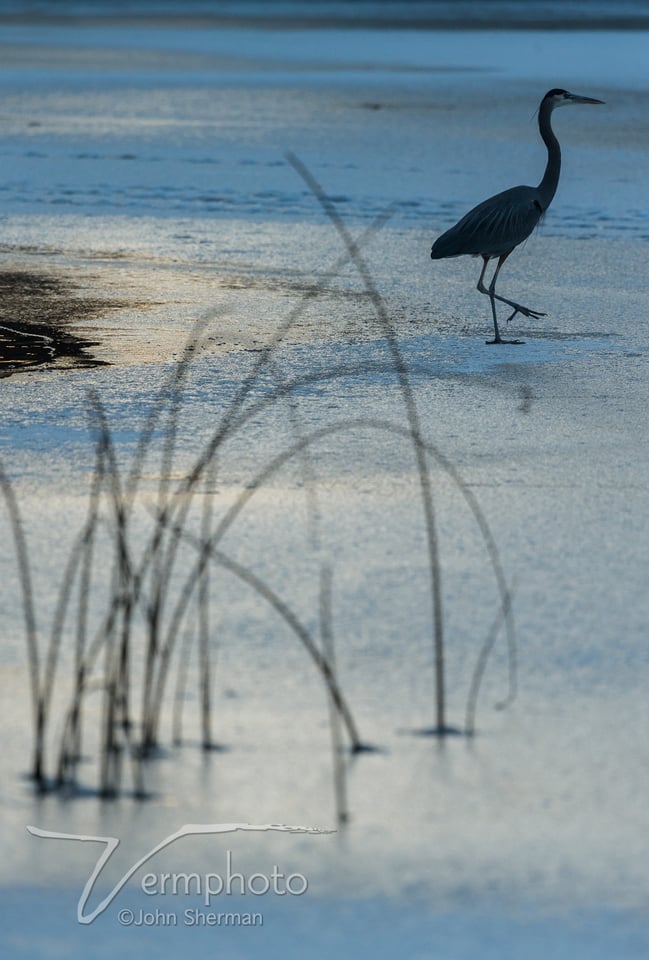

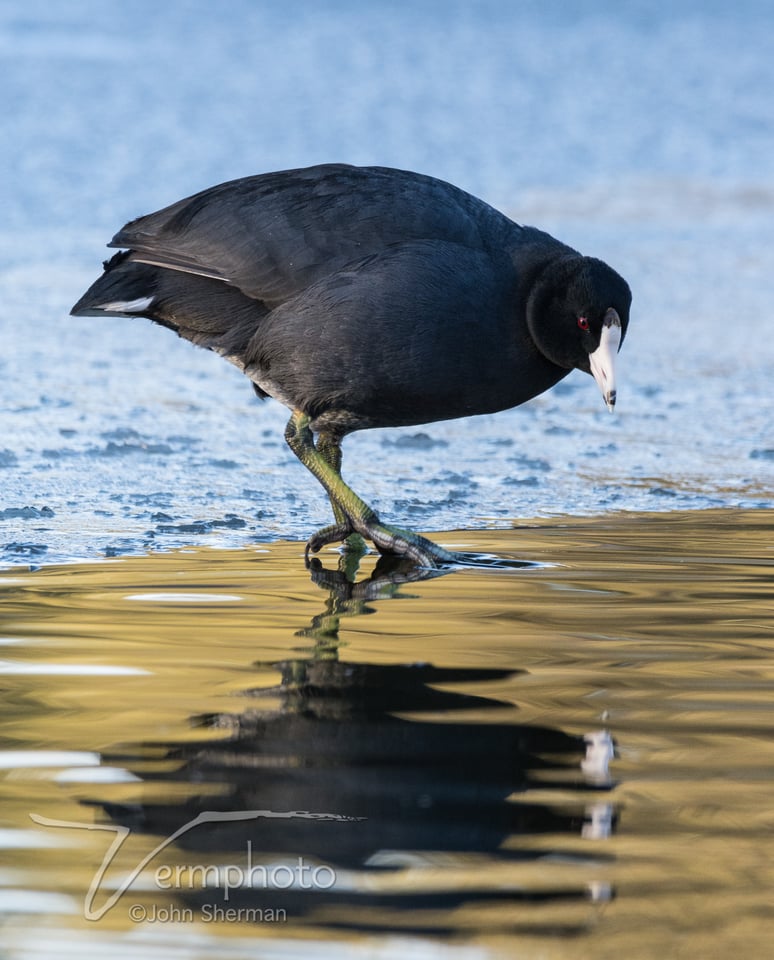













I have a Nikon D750. I want a lens for wildlife including birds and am planning to go on a safari next year. What would the group recommend out of these lenses?
Thank you for your wonderful test of Niki, Tami and Sigi.
I still bought the Niki without compromise and am absolutely overwhelmed by how sharp my shots are. The combination with my D4s.
Sounds unbelievable, but it’s true: I took hand-held photos from the mountain to the village. Illuminated streets, moving cars, pedestrians captured. The sharpness and the colors are terrific. The quality is absolutely satisfactory. I don’t want to try any of the other lenses. Niki has my purchase recommendation!
Lens life. build quality and service more important than little sharpness then other. Nikon 200-500 lens has better lens build quality and Nikon service.
You COULDN’T* give a shit… “could” is exactly the opposite of what you’re trying to say, i.e. that you do care, when you’re trying to say you don’t
Yes the G2 is much better sealed.
I’m wondering if the new version of the Tamron, the G2, has fixed the weather sealing issue? It appears to have been significantly updated.
My cameras are a Nikon D7100 and D7200. My longest lens is the 70-300mm (the FX version). I am a fire photographer and much of my shooting is of water dropping helicopters and fixed-wing aircraft.
Since most of the examples in this and in others I’ve read are regarding wildlife and birds-in-flight, which of the three lenses would you recommend for MY needs? I would just guess that most of the time the lens would be at its longest point, 500 or 600, depending on which lens, but there is the flexibility of being able to “zoom back” if needed.
Appreciate your input.
if using 7100-7200 . for dx body. 18-400mm lens is perfect ultra sharp very very small , compact and cheap lens. Perfect image quality .U can shoot . ultra sharp on 18mm and 400mm in my testes. Hard to believe how good lens . If you don’t need 500-600mm . Highly recommended . I use afs 300 2.8 , 300 f4pf 70-200f4 my bodies D500 D4s D750.
Terrific and informative write up. Thank you. I had, indeed, been shopping for one of these 3 lenses and eventually decided on the Sigma.
My deciding factor was price. I live on Canada and each of those lenses is $400-$500 more expensive here with the Nikon being the most e pensive, the Tamron next and the Sigma third.
After trying all 3 and liking them all, I found the Sigma, for me, to be the best value. Thus far, the AF has been pretty much spot on. Sharpness has been very good overall on my Nikon D7000 and the stiff zoom has not bothered me as I’ve got fairly big hands.
In a nutshell, some of the issues mentioned are present like flare and manual focus which, i rarely use anyway.
Overall,I’m quite pleased with it but,I’m sure anyone would be happy with either one of them. They all perform well for what they are, and that is not professional prime lenses that cost 10x more.
Great review! Would try between Niki and Tami new g2
Thanks
Wow, what a great review! I’m looking at these options right now. One of the things I’m curious about is depreciation (in case I get bored of birds!). Would you see any difference there, do you think?